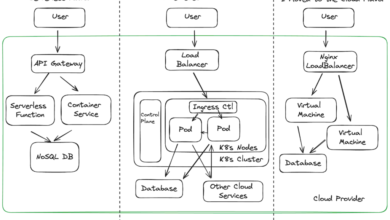Storage strategy in the multicloud eraStorage strategy in the multicloud era :: Technology Decisions

We’ve long heard about the importance of digital transformation and, for your organisation, it’s probably an ongoing process. Digital transformation is essential if you want to remain competitive and for innovating new products and services designed to surprise and delight your customers.
But innovation is, to paraphrase a quote from science fiction author William Gibson, unevenly distributed. According to the 2023 Dell Innovation Index, more than half of business leaders worry their organisations won’t be relevant in three to five years’ time because of a lack of investment in their innovation pipeline.
For those companies with a solid innovation agenda, one of the most important investments you can make is in cloud computing and storage.
According to Gartner, spending on cloud services will reach 50% of the total addressable market for the first time in 2024. Public cloud spending in Australia is set to reach $23.2 billion this year, up 19.3% from 2023.
This doesn’t mean cloud is the be-all and end-all, as investments in on-premise storage infrastructure, or not linked to the cloud, continue to go from strength to strength, up almost 10% and with a global market value that hovered around US$15 billion, according to IDC.
What do these figures tell us? The first is that the business economy, despite the risks of recession present in many nations, has decided to bet on digitisation to become more efficient, while the cloud paradigm has become the technological standard to support this acceleration of change.
On the other hand, data has become the essential raw material in the strategic orientation of business, and this continuous expansion of data requires you to evaluate all available alternatives for the storage, computation, intelligent analysis and delivery of critical information. This has made data storage and management ecosystems more complex, a challenging dashboard for CIOs, and one that you, as a leader, must assess.
Multicloud: How did we get here?
So, what are the cloud architectures that coexist in terms of data management and information storage?
1. Public cloud
In a public cloud environment, compute, storage and other IT infrastructure resources are provided by an external provider as a service.
This has led to major changes in many of the core competencies of IT teams in the enterprise. Data centre experts have been joined by new profiles such as cloud environment architects, who are responsible for establishing the criteria for assigning capacities to each IT instance and project at the cloud provider. At the operational level, the cloud has brought with it new challenges for IT leadership in terms of on-premise and cloud data governance. It has also imposed increased pressure on data security that has moved from the perimeter of the traditional data centre to a distributed, and in many cases, geographically dispersed environment.
While the main public cloud providers are Amazon Web Services (AWS), Microsoft Azure and Google Cloud Platform, an increasing number of companies are offering this service.
The public cloud has been the enabler of a major financial shift in IT management: the ability to migrate capital costs to operating expenses, while many maintenance and security items are shared in the relationship with the cloud provider.
For IT teams, this financial approach has meant greater flexibility for technology-based innovation processes, as they have been freed from the rigid technology acquisition processes that forced them to project capital expenditures over time, to start operating on demand and scalability as imposed by the reality of the business.
However, given the expansive nature of data, public cloud infrastructure can bring frictions in terms of data storage governance and the speed of access to this critical information, if the data resides in different instances of the public cloud.
While scalability is an underlying advantage of the cloud paradigm, many companies also appreciate the impact on operating costs that exponential demands on compute and storage resources can have. And when demands are unscheduled, according to contracts with some cloud providers, service bill amounts can become prohibitive.
2. Private cloud
This is a tailor-made suite for a single company. That is, the computing and storage technology is at the exclusive service of an organisation that may be the owner, or that accesses such infrastructure as a managed service through the network.
The private cloud is an alternative for businesses seeking to maintain control over their infrastructure, expanding the availability of software-managed resources. This cloud modality offers the advantage of being able to model exactly the ecosystem for data management, as well as the technologies used to build it.
However, a private cloud-based IT strategy must contend with a higher risk of obsolescence. As a proprietary structure without the advantages of economies of scale of public clouds, it may face greater obsolescence of critical software components such as virtual machines or be more vulnerable to human error in internal management, including greater vulnerability to cyber attacks at the edge.
3. Hybrid cloud
A hybrid cloud architecture combines the use of public and private cloud services from an orchestration solution for the two architectures.
Under this type of model, the compute and storage environment can be managed by an external provider that alternates the placement of loads between these environments: front-end applications in the public cloud, while critical data storage is reserved for the private cloud. For IT teams, this means a higher level of IT resource management with greater flexibility and agility to respond to the IT demands of the business. For their part, all departments in the organisation can significantly shorten production and launch times for new technology-based products and services.
The ability to load-balance is one of the main attributes of hybrid cloud, but it requires strong governance policies for the movement of critical data in the IT operation.
4. Multicloud
A multicloud architecture stems from a de facto trend in enterprise environments: the integration of the services of several public clouds with the services of private clouds, hybrid and on-premise architectures. It can be a compute and storage infrastructure managed by third parties and involves the integration of several cloud providers.
This model offers the best performance when it comes to optimising costs and application performance.
Multicloud environments present IT teams with a major governance challenge. Without the support of a technology that integrates resources across multiple clouds, IT teams only get complexity, not a true multicloud environment. Success in the multicloud era depends on a consistent data strategy across complex environments, anchored by a powerful storage architecture.
The key is to integrate enabled resources from multiple clouds, while incorporating technologies and solutions that reduce complexity. For IT teams, this is at the core of a state-of-the-art storage strategy.
A complexity that is difficult to handle alone
As we’ve seen, you have many possibilities for managing and storing your data; however, this creates a complexity that is impossible to handle alone.
This is why you need to have a partner who can help you manage data complexity, regardless of whether it’s in a public cloud, hybrid, multicloud or on-premise. As data grows exponentially, having storage solutions in place to help drive your digital transformation and innovation agenda is critical.



